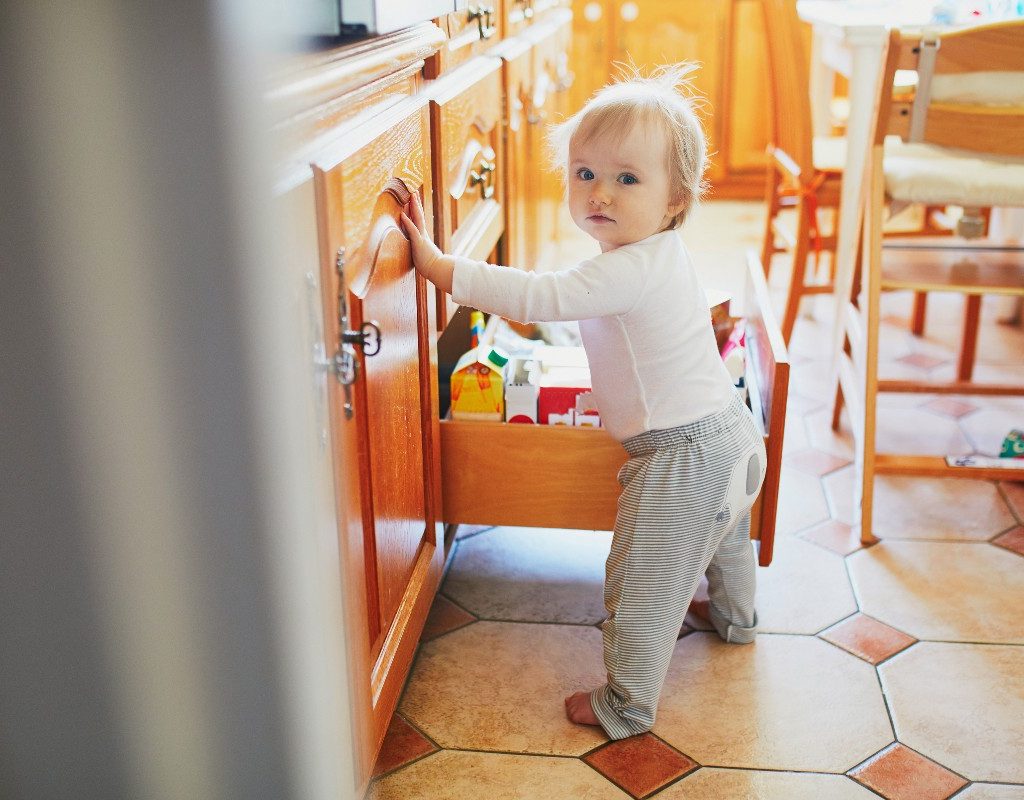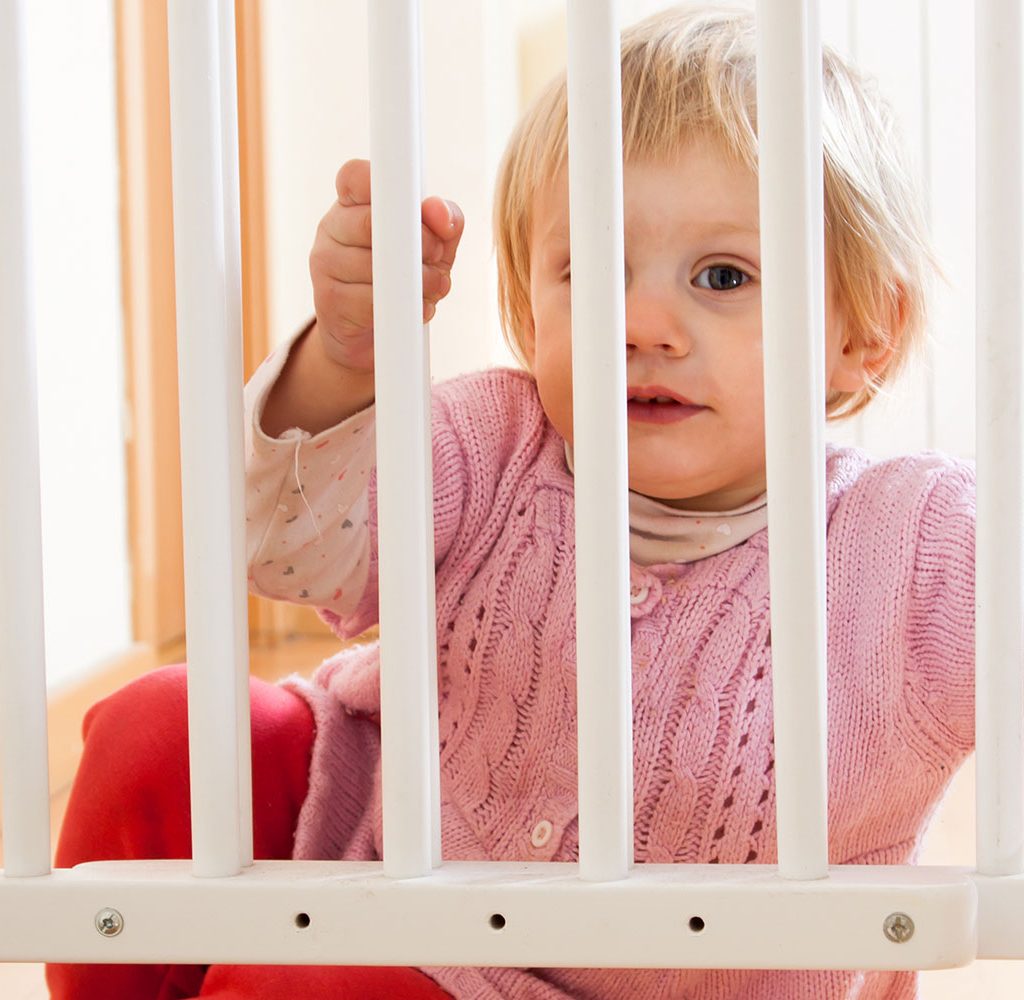You might not be in the babyproofing stage just yet. If your baby isn’t quite mobile, we have one word for you: Enjoy! This moment is fleeting, and before you know it, your tiny terror will be getting into all kinds of things — scurrying and scooting, and crawling and causing chaos. Of course, this is a good thing. You want your baby to be inquisitive and active. It’s just that, well, your seemingly comfy, cozy home is loaded with potential dangers you never even thought about.
Here’s what we’re getting at: You can’t start babyproofing too early. Rather, you want to begin before your baby begins opening cabinets, zooming from room to room, or attempting to stick objects into electrical outlets (gulp). It may sound overwhelming, but you can make your house a safe space for play by taking a few smart precautions and using a few key products.
Ready to start planning? We’re sharing a few tips, plus some of the best childproofing products you need to have handy to get it all done fast.

Get down on your toddler’s level
In order to outsmart a toddler, you have to think like a toddler — and act like one. Get down on the ground so that you can see things from their level. This may help you realize that there’s a lot to explore and even more potential mischief to make. As you crawl from room to room, use Post-It notes to mark any areas that need to be addressed or could be seen as safety hazards.
Declutter/remove reachable items
Your home is chock-full of curious eye candy — shiny trinkets your little one can barely resist. That vintage bar cart you love so much with beautiful bottles and antique crystal — it has got to go. In fact, you are going to want to say goodbye to a lot of your favorite decorative items. Anything breakable, sharp, or heavy should be placed out of reach or temporarily removed from display. Don’t worry; you will be able to have nice things again. (Someday.)

Siphon off safe spaces
Buy at Amazon are everything; trust us: You are going to want to invest some serious stock in these veritable jail-makers. Of course, you do want your little one to have plenty of freedom and flexibility to move, play, and flourish — so make sure you are not setting up a gated maze throughout the house. Instead, block off areas you can’t easily babyproof (i.e., fireplaces), and be sure there are wall-mounted gates at the bottom and top of stairways.
Use doorknob covers
You may be thinking about potty training at some point soon, but, in the meantime, keep the bathroom off-limits — or make sure you accompany your little one at all times. There are too many potential dangers (and a toilet full of water that is practically begging your child to come and play). Keep the bathroom door shut and Buy at Amazon to make it hard for them to twist open. Once your baby starts using a training potty, you might consider getting a toilet seat latch. Also, remember that it’s never safe to leave your little one around water or in the bathtub alone.
Babyproof your cabinets and drawers
Little snack seekers will soon learn where you keep all the good stuff. But tiny fingers can get pinched in slammed cabinet doors and drawers; try using Buy at Amazon in your kitchen. You can typically buy these on their own, or you may find them included in a larger babyproof kit (a great starting point for all your efforts!).
Anchor heavy items
Heavy furniture (i.e., armoires, entertainment systems, storage centers, etc.) should be anchored to the walls. Buy at Amazon televisions, mirrors, art, etc. Toddlers can have a surprising amount of strength, and you don’t want to risk injury.
Use safety outlet plugs
Make sure you get Buy at Amazon for all electrical outlets. Babies discover these little wall holes early on, and since they’re typically low to the ground, you may want to make covering them one of your earliest childproofing efforts.
Check your windows and blinds/cords
Windows should be checked for stability and babyproofed with guards or gates (regular screens can still be pushed out). You can also make sure a window won’t be opened more than four inches with a stopper or wedge. Moreover, check the blinds and cords. Babies like to put their heads in between slats, and cords or wires should be neatly Buy at Amazon to avoid the risk of strangulation.
Keep cleaning/laundry products out of reach
Make sure laundry pods, cleaning supplies, and other chemical items are barricaded off or placed out of your baby’s reach.
Check for sharp corners
Tables can have sharp edges that are just the perfect height for Baby to clip (your little one’s head is like a magnet!). Consider Buy at Amazon for square or rectangular edges.
Your babyproofing checklist may seem long, but with the right products and some savvy planning, you can accomplish everything you need to do (or most of it) in a weekend! Just remember to keep careful watch and pay attention to what your child is trying to get into. It’s great to have an adventurous toddler. You just want to make sure that they can explore and stay safe.


